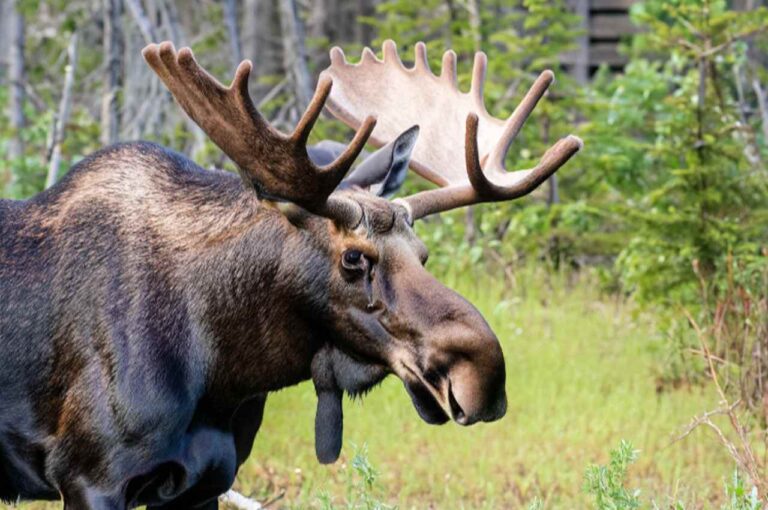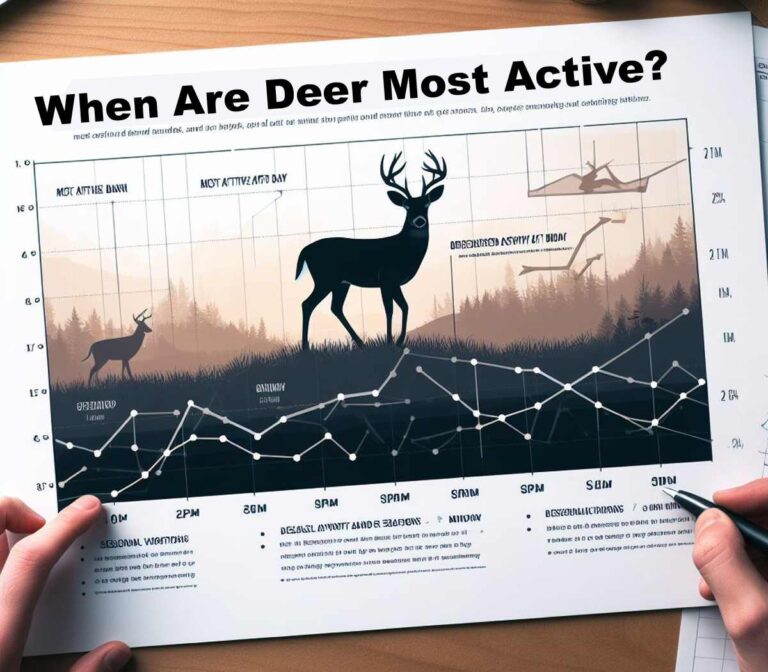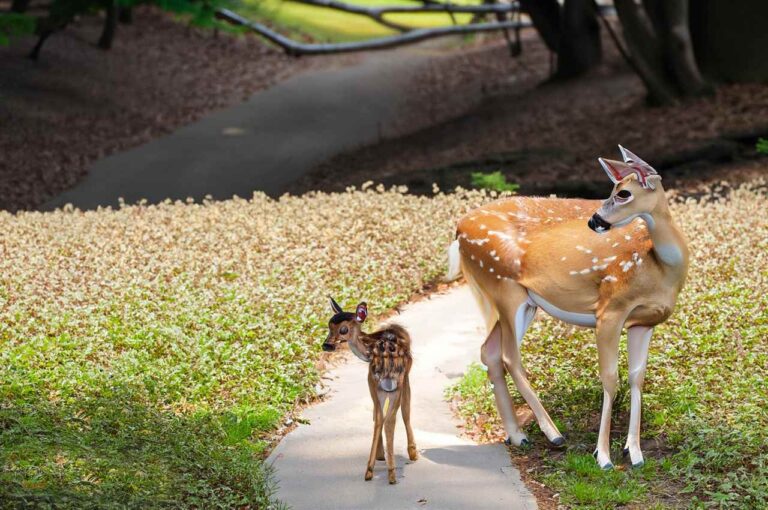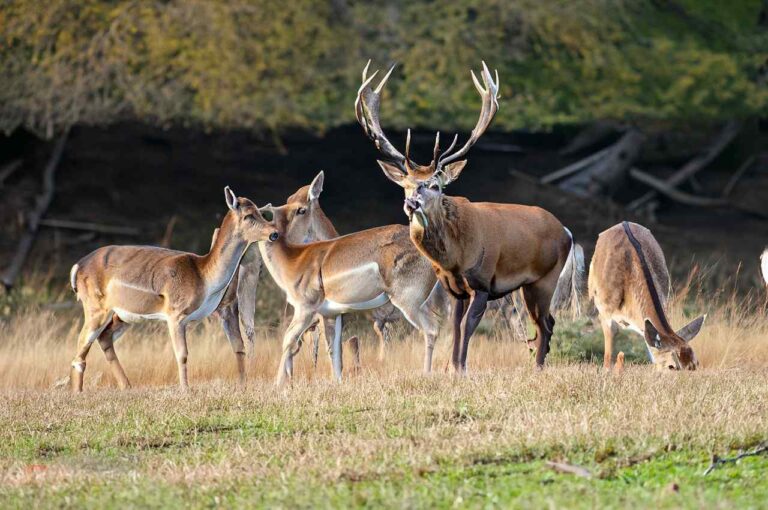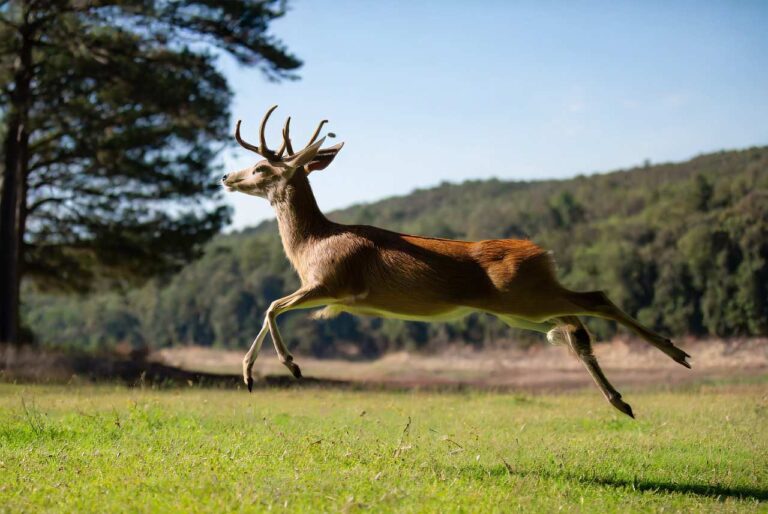Do Deer Attack Humans: What Really Happens Getting Closer To Deer?
Deer are often portrayed as gentle, elegant animals. But Do deer attack humans? Deer can and do attack humans in certain situations, thus the answer is indeed true. Although uncommon, deer assaults may result in significant harm. If you come into an aggressive deer, knowing when and why it acts that way might keep you safe.
Will deer attack humans?
Deer attacks on humans are rare, but they can happen. Deer are typically timid and wary creatures, but if threatened or trapped, they may turn hostile. Deer are more prone to attack people if they are frightened or defending their young.
In the following circumstances, a deer may be more inclined to assault a person:
• If you are walking or running in an area where deer are known to live.
• If you give deer food or let them graze in your yard.
• If you are getting too near to a deer.
• If you are making sudden movements or loud noises near a deer.
• If a deer is protecting its young.
Why Do Deer Attack Humans?
Normally, deer avoid people and run away when confronted. However, the following situations may lead to hostile behavior:
- Mating Season Aggression: During the autumn “rut” or mating season, male deer, known as bucks, become very hostile. They only care about mating with doe deer. Bucks have attacked and rushed at anyone who get in the way of breeding activities.
- Protecting Fawns: Does, or female deer, are ferociously protective moms. In the spring, they could attack anybody who approach their camouflaged fawns.
- Self-Defense: Deer, like any other wild animal, will defend itself if it feels trapped and unable to flee. At close range, startling a deer might result in an attack.
- Habituation to Humans: Deer may lose their fear and natural wariness if they grow unduly acclimated to human presence. This may result in forceful actions against others.
What Times Do Deer Attack?
The following seasons are the riskiest for deer aggression:
- Fall: Bucks are most aggressive during the mating season, or “rut,” which peaks in October and November.
- Spring: The fawning season, which occurs in May and June, protects young fawns.
- Winter: A lack of natural food causes deer to become brave and frantic near people.
Any time of year, deer that have become unduly used to people may attack. Attacks are more likely to occur in neighborhoods where deer no longer fear humans.
Situations Where Deer May Attack Humans
| Situation | Description |
|---|---|
| Walking or running in deer habitat | Increased risk of encountering deer; need to be cautious. |
| Feeding deer or allowing them in your yard | Deer that are attracted to you could behave more aggressively if they feel secure around you. |
| Approaching a deer too closely | Being approached too closely may cause deer to feel frightened and exhibit defensive actions. |
| Making sudden movements or loud noises near a deer | Deer may become violent when startled because they respond to imagined dangers. |
| A deer protecting its young | Deer mothers are very protective of their calves, and they may even strike if they feel threatened. |
Signs of an Aggressive Deer
Keep an eye out for these body language cues that suggest a deer could attack:
- Ears laid back against the head
- Hair standing up along the back and neck
- Intense stare and raised tail, preparing to charge
- Snorting, grunting, or stomping hooves
- Lowered antlers (in bucks) pointing at target
Signs of a Potential Deer Attack
| Warning Signs | Description |
|---|---|
| Deer tracks in your yard | Deer are likely to visit your property if deer tracks are present. |
| Deer droppings in your yard | Deer activity in the neighborhood may be determined by finding deer droppings in your yard. |
| Deer sightings in your yard | The likelihood of possible contacts may grow if deer are often seen on your land. |
| Property damage, such as knocked-over plants or fences | Deer encounters may cause damage to your property, especially to fences or plants. |
How to Avoid Deer Attacks
Follow these recommendations to avoid deer aggression:
- Allow deer at least 50 yards of space. Avoid crowding or enclosing them.
- When deer are in the rut and fawning, stay away from such regions.
- If you come across a hostile deer, carefully back away.
- Avoid jerky movements that can spook deer.
- If a deer snorts or stomps, remain motionless. Before leaving, let it settle down first.
- Avoid running or turning your back on a hostile deer since doing so might result in an attack.
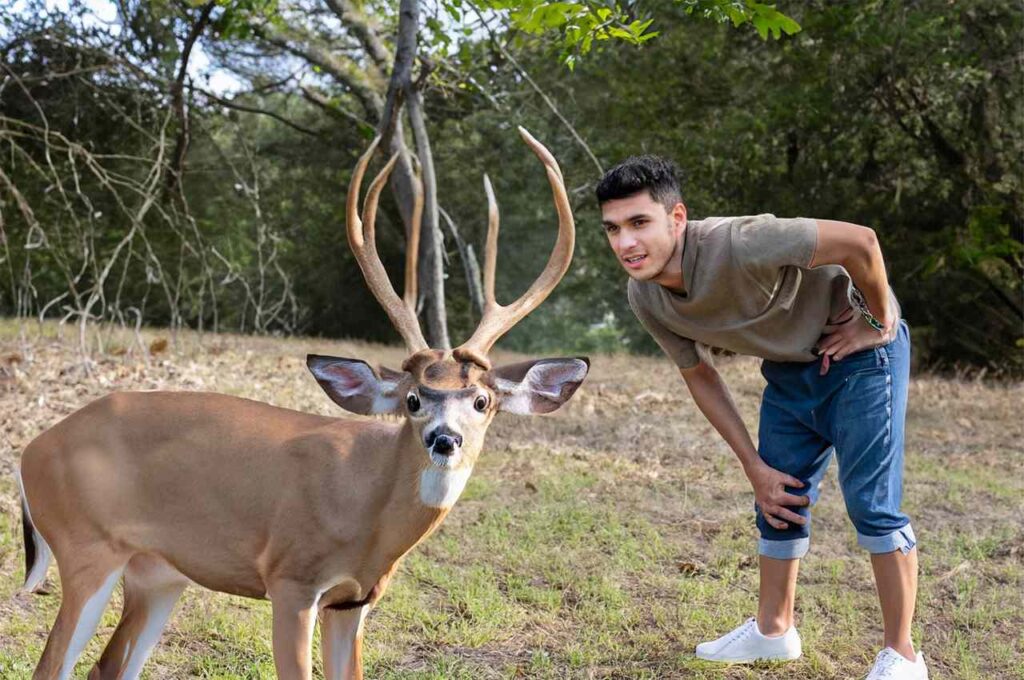
Tips to Prevent Deer Attacks
| Preventive Measure | Description |
|---|---|
| Be aware of your surroundings | At dawn and dusk, deer are most active, so be careful around them. |
| Make noise | Talking, clapping, or banging pots and pans suddenly might shock and scare off deer. |
| Avoid deer feeding areas | Avoid providing deer with food or letting them graze in your yard since this attracts them. |
| Make yourself look big and intimidating | If you see a deer, seem menacing by standing tall, waving your arms, and making loud sounds. |
| Back away slowly if charged | Keep your cool and carefully back away if a deer charges you rather than rushing since it can arouse their prey drive. |
| Trim your bushes and trees | Deer looking for shelter will be less drawn to your yard if the amount of thick vegetation is reduced. |
| Install motion-activated lights | Deer are scared of bright lights, particularly at night, thus motion-activated lights scare them away. |
| Fence your yard | A tall fence may act as a physical barrier to keep deer out of your yard. |
| Pet your dog regularly | Dogs may scare off deer, so engage with them often and keep them on a leash while you're outside. |
| Stay calm and avoid sudden movements when spotted | Keep your cool and refrain from making sudden movements if you come across a deer. |
Surviving a Deer Attack
Here are some precautions to take in case a deer charges and attacks:
- To protect yourself, attempt to hide behind a tree, rock, or other obstruction. If there is a tree nearby, climb it.
- Scream at the deer while making your arms seem larger to intimidate it.
- If you are knocked to the ground, ball up to protect your head and neck. If you can, grab the antlers to avoid getting gored.
- Following the assault, keep motionless. The deer could think the danger has been eliminated and go on.
- If the assault continues, as a last option, fight back violently with whatever is at hand.
What to Do if an Aggressive Deer Approaches
Keep your cool and avoid making abrupt moves. Back away slowly while facing the deer. Raise your arms and shout loudly to seem aggressive. Find cover behind a substantial barrier, if possible. If you’re knocked to the ground, curl up and protect your head. Report the occurrence to alert others about the dangerous animal
Accidental Deer Attack Injuries
When a deer attacks, its sharp hooves and antlers may cause severe injuries.
- Blunt force injuries brought on by being trampled by hooves or antlers
- Deep stab wounds caused by antler tips
- Antler lacerations ripping flesh
- Broken bones as a result of hard contact
- Internal organ injury from a chest or abdominal strike
Injury from a deer assault that results in blood, organ damage, or infection may be deadly if left untreated. After being attacked by a deer, seek emergency medical assistance.
Fatal Deer Attacks Are Very Rare
- On average, less than 2 deer-related deaths take place each year in the United States.
- Deer often relent when the apparent danger is removed.
- During the rut, large-antlered bucks tend to engage in the most dangerous or Fatal Deer Attacks.
- The riskiest deer are those that often come into contact with people.
- The deer often disengages from an assault by acting dead and remaining motionless.
Tips for Lowering the Risk of Deer Attacks
Although deer assaults are rare, here are some suggestions to reduce your danger when deer are present:
- Use motion-activated lights or sprinklers to keep deer out of yards.
- Avoid feeding deer since it reduces their fear of people.
- Keep dogs on leashes to stop them from attacking deer when pursuing them.
- Teach kids to stay away from any wild animals, especially deer.
- When deer are in rut and fawning season, avoid trekking or camping in such regions.
- To frighten away an approaching deer, make noise and wave your arms.
- Inform the authorities of any aggressive deer behavior in the area.
- Encourage deer population reduction initiatives in troubled regions.
.
Why I’m Wary of Deer After Being Charged
Deer Behavior in the Wild: Insights from Personal Encounters
After spending several hours watching deer in their natural environment, it becomes obvious that these creatures are usually calm. Personal experiences have, however, proven that certain circumstances may incite violent behavior, therefore being aware of these subtleties is essential.
Field observations often show that deer are protective of their young. Particularly doe deer show a tremendous resolve to protect their fawns. A fawn may get protective if you go too close to it, particularly if the mother is there. Although does lack antlers, they may nevertheless be quite dangerous when they sense a threat because to their strong hooves.
Navigating the Rut: Tales from the Field
Deer’s interesting but sometimes dangerous rutting season provides fascinating insights into their behavior. One may see in the field how once shy bucks become territorial and hostile animals. Personal observations have shown that at this time, bucks put their own safety last and often put their own mating needs last.
Rutting bucks are known to display extreme hostility, confronting any potential competitors with their pointed hooves and antlers. During the rut, it’s crucial for people in the field to use care and keep a safe distance from these powerful animals.
Don’t Underestimate a Mother Deer’s Protective Fury
I found out personally how perilous it is to approach a doe with her fawns when one attacked me angrily for getting too near. It’s important to take their motherly defensiveness seriously.
Cornered and Defensive: Understanding Deer Behavior
Deer prefer to flee rather to fight, but when trapped or frightened, their protective instincts take over, one discovers in the field. Personal encounters highlight the fact that deer are naturally wary and would want to avoid danger. If flight is not an option, they could turn to defensive aggressiveness.
It’s crucial to comprehend the conditions that give rise to defensive attacks. A deer could decide to engage a perceived danger that is close enough to strike it if it believes that it has no other choice. This knowledge may aid professionals in foreseeing and avoiding such situations.
Why I Carry a Noisemaker to Deter Deer Now
I always carry a noisemaker with me when I go outside to help frighten deer away after almost being attacked by one in my own backyard. It makes me feel calm.
Surviving a Deer Encounter: Lessons from Real-life Scenarios
Personal experiences highlight the need of maintaining composure when confronted with a deer assault in the field. It’s important to maintain composure throughout a conflict. If as all possible, slowly retreating from the deer enables a dignified departure without inciting greater hostility.
Knowing how to defend oneself in situations when an assault seems to be impending may save a life. Knowing how to read a deer’s body language to spot warning signals of an approaching assault, such as a tucked tail, a raised head, and a fixed stare, may help you respond in time.
Although dealing with a deer assault is an uncommon event, being ready and knowledgeable about how these gorgeous animals behave in the wild may ensure a safe and respectful relationship.
Frequently Asked Question
FAQs about Deer Behavior and Potential Human Encounters
1. Do Deer Attack Humans Often?
Deer generally don’t attack humans frequently, but it can happen, when frightened or trapped, particularly when defending their young. Be aware of your surroundings, create noise to prevent scaring deer, keep a safe distance, never approach a deer with its young, and stand tall and make loud sounds to seem threatening to avoid deer assaults. Since deer are weak, backing away slowly and defending oneself with available equipment should work if charged. Although deer assaults are rare, being aware and prepared may protect you.
2. Why Deer Become Aggressive Toward Humans?
Deer, who are normally shy and non-aggressive creatures, may become angry humans in certain situations. Territorial instinct, maternal instinct, rivalry for mates during the rut, survival reaction when cornered, and a lack of fear as deer get acclimated to human presence are some of the elements that often lead to this aggressiveness. Due to perceived threats to their territory, young, chances for reproduction, or safety, deer may become hostile under these conditions, sometimes attacking people.
3. When Do Deer Attacks on Humans Occur?
Deer attacks on humans can occur throughout the year, but they are most common during specific times. Fall rut, from October to December, makes males more aggressive and territorial, increasing deer assaults. During spring fawning (May–June), does are more protective of young and might attack they feel threatened. Human-feeding deer and significant human activity near highways or trails might also increase deer attacks.
4. Why Do Deer Attack Humans During the Rutting Season?
Male deer (bucks) may become very territorial and hostile during the rut (mating season), putting their ability to reproduce above all else. They can see people as competitors and respond aggressively, armed with their antlers and hooves.
5. Are Deer Likely to Attack Humans When Protecting Their Young?
Yes, deer, especially does (female deer), may develop protective behaviors toward their young. A deer may respond violently to protect its young if it perceives a possible danger close by.
6. How Can I Prevent Deer Attacks?
To prevent deer attacks, it’s essential to be cautious and be careful not to frighten deer, particularly at dawn and dusk. Keep a safe distance, avoid unexpected movements, and never approach a deer with its young, since does are protective. If a deer approaches, stand tall, wave your arms, and make loud sounds to frighten it away. Avoid deer feeding places, remove thick vegetation, install motion-activated lights, and fence your yard. Petting your dog and leashing them outside will also dissuade deer. Monitor for deer tracks, droppings, sightings, or property damage to quickly address threats and protect yourself and your property.
7. What Are the Warning Signs of an Impending Deer Attack?
Before attacking, deer may display violent body language. A tucked tail, a flat or slightly lifted head, drooping or facing-forward ears, an upward-held nose, and intense, concentrated eye contact are all warning signs. If you see any of these indicators, carefully retreat from the deer.
8. What Should I Do If a Deer Charges at Me?
Try to hide behind a big object, such as a tree, boulder, or trail sign, if a deer rushes at you. If there is no cover, try to frighten the deer by seeming bigger than you are and making loud sounds. If everything else fails, fold yourself into a fetal posture to shield your torso and head.
9. What Injuries Can Occur in a Deer Attack?
Attacks by deer may result in bruises, puncture wounds, skin abrasions, and, in extreme circumstances, mortality. Because deer’s antlers and hooves are strong weapons, it’s imperative to avoid conflicts wherever possible.
10. How Common Are Deer Attacks on Humans?
Although not very often, deer assaults on people sometimes happen, particularly in areas with a large deer population. Human encroachment on deer habitats has increased the incidence of assaults.
11. What Precautions Should I Take During Deer Rutting Season?
It’s best to keep away from bucks acting aggressively during the rutting season, which normally happens in the fall. Stagger your approach and use additional caution since rutting bucks are less prone to avoid people.
12. Should I Stay Away from Fawns to Avoid Deer Attacks?
Yes, it is advised to avoid approaching fawns since mother deer (does) may turn hostile if they feel threatened by a danger to their young. Even if you don’t plan to hurt somebody, keeping your distance is crucial to avoiding assaults.
13. What Can I Do to Stay Safe While Observing Deer in the Wild?
Use binoculars to keep your distance while seeing deer in their natural environment. To protect both you and the deer, keep a safe distance from them and heed any instructions given by park officials.
Conclusion
Deer attack when they feel threatened, especially during breeding season; watch for warning signs like raised fur, stomping hooves, and intense stare; avoid startling or cornering deer at close range; try to intimidate the deer during an attack; seek immediate medical attention for any injuries sustained; and use caution when around deer displaying aggressive behavior
You may prevent confrontations with aggressive deer by being aware of what triggers their hostility. If a frightening deer ever approaches you, having knowledge of the possible risk will enable you to take precautions to protect yourself. Most humans still have a very low chance of suffering harm from a deer assault if they take the necessary measures.
- Wyoming Deer Season 2025-2026 New Schedule & Rules - 15 September 2025
- Wisconsin Deer Season 2025-2026: WI Deer Hunting Guide [Schedule, Rules, Licenses] - 15 September 2025
- West Virginia Deer Season 2025-2026 Complete Date & Guide - 15 September 2025


